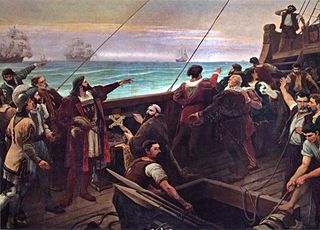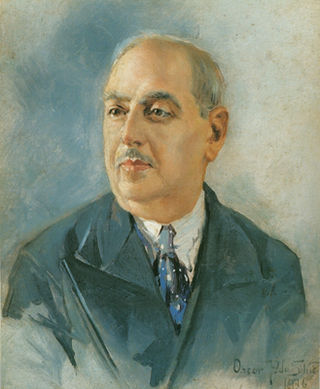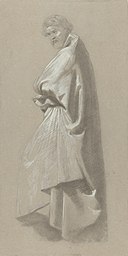
Fernando Ferreira Meirelles is a Brazilian film director, producer and screenwriter. He is best known for co-directing the film City of God, released in 2002 in Brazil and in 2003 in the U.S. by Miramax Films, which received international critical acclaim. For his work in the film, he was nominated for an Academy Award for Best Director. He was also nominated for a Golden Globe Award for Best Director in 2005 for The Constant Gardener, which garnered the Academy Award for Best Supporting Actress for Rachel Weisz. He also directed the 2008 adaptation of José Saramago's novel Blindness, and the 2011 film 360. In 2019 Meirelles directed The Two Popes for Netflix.

Indianism was a Brazilian literary and artistic movement that reached its peak during the first stages of Romanticism in the country, though it had been present in Brazilian literature since the Baroque period.

Priscilla Meirelles de Almeida-Estrada is a Brazilian model, television host, actress, environmentalist and beauty queen. She won the Miss Earth 2004 pageant held in the Philippines. She also won the Miss Globe International 2003 pageant. Meirelles has been married to Filipino actor and model John Estrada since March 2011.

José Ferraz de Almeida Júnior, commonly known as Almeida Júnior, was a Brazilian artist and designer; one of the first there to paint in the Realistic tradition of Gustave Courbet and Jean-François Millet. The "Dia do Artista Plástico" is celebrated on his birthday.

Victor Meirelles de Lima was a Brazilian painter and teacher who is best known for his works relating to his nation's culture and history. From humble origins, his talent was soon recognized, being admitted as a student at the Imperial Academy of Fine Arts. He specialized in the genre of history painting, and upon winning the Academy's Foreign Travel Award, he spent several years training in Europe. There he painted his best-known work, Primeira Missa no Brasil. Returning to Brazil, he became one of emperor Pedro II's favorite painters, joining the monarch's patronage program and aligning himself with his proposal to renew the image of Brazil through the creation of visual symbols of its history.

The creation of art in the geographic area now known as Brazil begins with the earliest records of its human habitation. The original inhabitants of the land, pre-Columbian Indigenous or Natives peoples, produced various forms of art; specific cultures like the Marajoara left sophisticated painted pottery. This area was colonized by Portugal in the 16th century and given the modern name of Brazil. Brazilian art is most commonly used as an umbrella term for art created in this region post Portuguese colonization.

Pedro Américo de Figueiredo e Melo was a Brazilian novelist, poet, scientist, art theorist, essayist, philosopher, politician and professor, but is best remembered as one of the most important academic painters in Brazil, leaving works of national impact. From an early age he showed an inclination towards the arts, being considered a child prodigy. At a very young age, he participated as a draftsman on an expedition of naturalists through the Brazilian northeast, and received government support to study at the Imperial Academy of Fine Arts. He did his artistic improvement in Paris, studying with famous painters, but he also dedicated himself to science and philosophy. Soon after his return to Brazil, he began to teach at the Academy and began a successful career, gaining prominence with great paintings of a civic and heroic character, inserting himself in the civilizing and modernizing program of the country fostered by emperor Pedro II, of which the Imperial Academy was the regulatory and executive arm in the artistic sphere.

Rodolfo Amoedo was a Brazilian painter, designer and decorator.

Eliseu Visconti, born Eliseo d'Angelo Visconti, was an Italian-born Brazilian painter, cartoonist, and teacher. He is considered one of the very few impressionist painters of Brazil. He is considered the initiator of the art nouveau in Brazil.

Brazilian painting, or visual arts, emerged in the late 16th century, influenced by the Baroque style imported from Portugal. Until the beginning of the 19th century, that style was the dominant school of painting in Brazil, flourishing across the whole of the settled territories, mainly along the coast but also in important inland centers like Minas Gerais.

João Zeferino da Costa was a Brazilian painter and designer.
Meirelles may refer to the following Brazilian people:

Events in the year 1903 in Brazil.

Antônio Firmino Monteiro was an Afro-Brazilian painter.

Moema is an oil painting on canvas created in 1866 by Brazilian artist Victor Meirelles. It depicts the homonym character from the epic poem Caramuru (1781), by Santa Rita Durão. The work does not depict a scene from the poem, but instead Meirelles's personal interpretation of the character's fate, submerging into the water after being rejected by Caramuru.

Oscar Pereira da Silva was a Brazilian painter, draftsman, designer, and instructor. He was active from the end of the 19th to the mid-20th century. He is noted for his depictions of historical events in Brazil, but also completed numerous portraits, religious works, genre scenes, still lifes, and landscapes. He "paid no attention to Brazilian folk tradition" and painted in an "antique style." After a period of study in France, he pursued a lucrative career in São Paulo, where his works are displayed at the Pinacoteca do Estado de São Paulo and the Museu do Ipiranga.

Batalha dos Guararapes is an oil painting created between 1875 and 1879. It represents a history painting from the first confrontation of the Battle of Guararapes that took place in the 17th century in the Captaincy of Pernambuco, which culminated with the banishment of the Dutch invaders from Brazilian lands. The canvas was painted by the Brazilian artist and professor of historical painting Victor Meirelles and the scene represents the victory of the Brazilian troops against the Dutch on April 19, 1648, in the first of the two confrontations that occurred in that battle, fought in the region of Guararapes Hill. The second confrontation would be fought months later at the same location, on February 19, 1649, leading to the definitive expulsion of the Dutch troops from the colony, which would only occur in January 1654, with the signing of their capitulation.

The first mass in Brazil was celebrated by Portuguese friar and bishop Henrique de Coimbra on April 26, 1500, a Sunday, on the beach of Coroa Vermelha, in Santa Cruz Cabrália, on the southern coast of Bahia.

The First Mass in Brazil is an oil painting of the historical genre by Brazilian painter Victor Meirelles. It is considered Meirelles' first major work. The painting was created between 1859 and 1861, in Paris, during the period when the artist lived in Europe on a scholarship granted by the Imperial Academy of Fine Arts. Covering an area of 9 m2, The First Mass in Brazil was inspired by the letter written by Pero Vaz de Caminha to the king of Portugal describing the first mass held in the country.


































































































